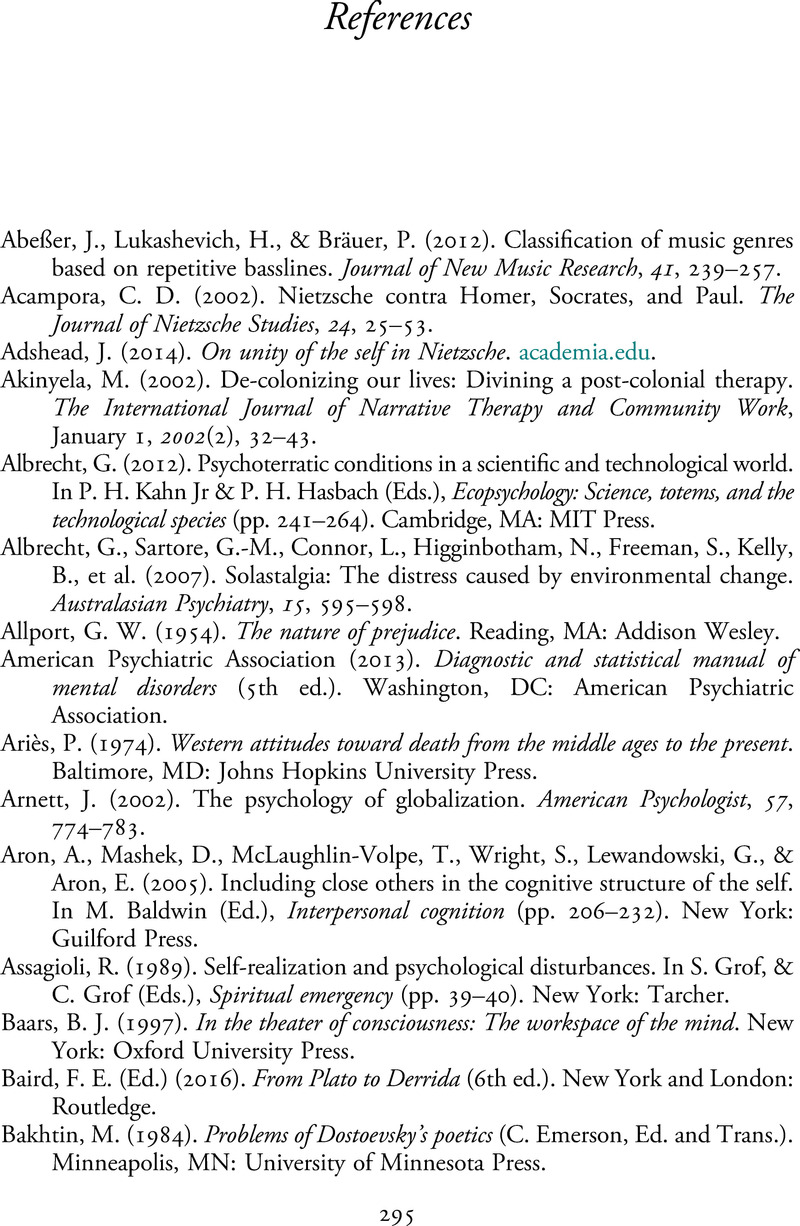Book contents
- Liberation in the Face of Uncertainty
- Liberation in the Face of Uncertainty
- Copyright page
- Dedication
- Contents
- Figures
- Tables
- Preface
- Acknowledgments
- Introduction
- Chapter 1 Playing with Plato
- Chapter 2 Centralization and Decentralization of the Self
- Chapter 3 The Other as Heaven and Hell
- Chapter 4 Re-enchantment of the World
- Chapter 5 Imprisonment and Liberation of the Self
- Chapter 6 Uncertainty in the Self
- Chapter 7 Multiple Well-Being and Other-Inclusive Happiness
- Glossary
- References
- Index
- References
References
Published online by Cambridge University Press: 06 January 2022
- Liberation in the Face of Uncertainty
- Liberation in the Face of Uncertainty
- Copyright page
- Dedication
- Contents
- Figures
- Tables
- Preface
- Acknowledgments
- Introduction
- Chapter 1 Playing with Plato
- Chapter 2 Centralization and Decentralization of the Self
- Chapter 3 The Other as Heaven and Hell
- Chapter 4 Re-enchantment of the World
- Chapter 5 Imprisonment and Liberation of the Self
- Chapter 6 Uncertainty in the Self
- Chapter 7 Multiple Well-Being and Other-Inclusive Happiness
- Glossary
- References
- Index
- References
Summary

- Type
- Chapter
- Information
- Liberation in the Face of UncertaintyA New Development in Dialogical Self Theory, pp. 295 - 312Publisher: Cambridge University PressPrint publication year: 2022



